
Rest by Marc Chagall
by Nina
Practicing yoga poses is not only a wonderful way to exercise, but it can also be a wonderful way to rest when you’re exhausted or fatigued. That’s because not only do you rest in a position that’s good for your body—as opposed to, say, collapsing on the couch—but practiced with a mental focus, yoga’s resting poses will trigger the relaxation response. And that will move you into the Rest and Digest state, the state in which our bodies and minds naturally restore themselves.
In the Rest and Digest state, your parasympathetic system, the part of your nervous system responsible for nourishing, restoring, and healing your body and mind, is fully operational. You are mentally and physically relaxed, your body’s vital signs are in their calm state, and the immune, repair, and digestive systems are working at full capacity. This state is not only very restful, but it’s the best natural antidote to chronic stress because your nervous system automatically lowers your stress hormone levels. See Coming into Balance: How Stress and Relaxation Work Together for more information. Although other activities, such as being out in nature, can also bring you into this state, it’s quick and easy to get there by doing even just one yoga pose at home.
In this post, I will be suggesting four different ways you can use yoga to rest—and de-stress—when you’re exhausted or fatigued. If you are wondering which one to choose, try asking yourself:
- What kind of fatigue are you feeling? Physical fatigue? Mental fatigue? Both?
- Have you been physically active during the day? If not, would lying still in one position be difficult or cause physical restlessness? Or does lying still sound absolutely delicious?
- Is your mind racing? Do you have a hard time switching it off while lying in one position?
- Are you feeling any anxiety or depression, even mild depression?
- Do you want to end your practice feeling rested and calm or somewhat energized?
- Are your legs particularly tired, for example, from walking, hiking, running, or standing all day?
Identifying these your individual needs and preferences will help you to make a choice among the four options, as I’ll describe below. Of course, if you have a favorite resting pose, whether Savasana, Reclined Cobbler’s pose, Legs Up the Wall pose, that is always a good place to start.
But, as always, be honest with yourself. If any pose you try—not matter who says it is the best resting pose—is not working for you, it’s not working for you. Try something else instead (see When Relaxing Isn’t Relaxing for tips).
1. Savasana
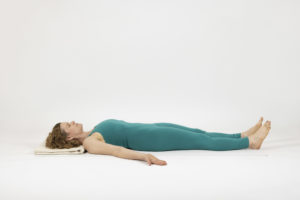
This is especially good pose for physical fatigue because it provides deep physical rest, allowing you to completely relax your musculoskeletal system in an anatomically neutral position. And you can stay as long as you like. And if you practice it with a mental focus—which we hope you will at least some of the time—this pose triggers the relaxation response, reducing your stress levels and allowing you to spend time in the Rest and Digest state. See How to Prepare for and Practice Savasana for information about how to choose a mental focus.
See 8 Ways to Practice Savasana for different variations as well as Featured Restorative Pose: Supported Relaxation Pose. And see Savasana: The Big Picture for lots more information about practicing this pose, including how several different teachers teach the pose and also about yoga nidra.
If you’re feeling at all depressed, even very mildly, try a lifted version on a bolster, so your chest area opens, which encourages deeper breathing.
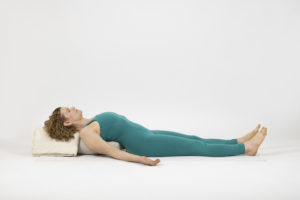
If your legs are tired or your back is aching, the version with legs on a chair can be very helpful. Also try using a bolster under your knees.
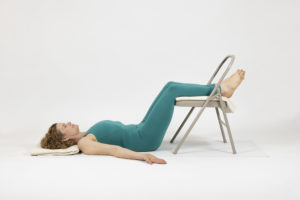
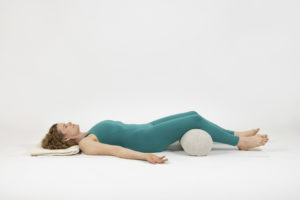
If you’re anxious with your front body exposed, try Prone Savasana.
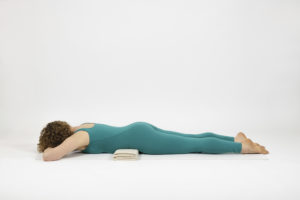
If there is nowhere you can lie down or if you’re not able to get up and down from the floor, you can actually do Savasana in a chair.
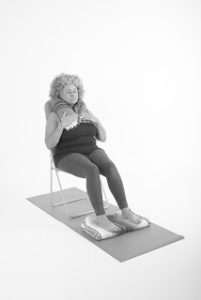
2. Restorative Yoga
If lying in Savasana for a long period of time doesn’t appeal to you and you want a bit of stretching or a little more movement, restorative yoga might be the right thing for you. Although in these poses you support yourself so you’re very comfortable and can rest deeply, most of the poses do gently stretch one of more parts of your body, which can release muscle tension. And certain pose shapes can be more comforting, more uplifting, or more soothing than simply lying in Savasana. See Restorative Yoga: The Big Picture for all the information we have on both the practice in general and the individual poses.
If you feel depressed, even very mildly, consider doing some restorative yoga poses with a backbend element in them.
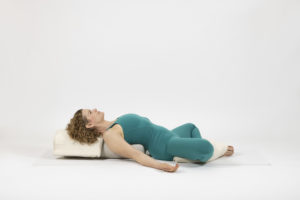
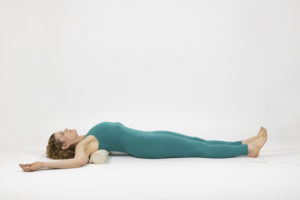
If you’re anxious, doing poses on your back may make you feel vulnerable. So choose prone poses like Prone Savasana, Supported Child’s pose, or Surfboard pose. (See for links to all the pose descriptions.)
Leza Lowitz is planning to write more restorative sequences in the future, but for now we have these:
Restorative Sequence: Calming and Grounding
Restorative Yoga and Journaling to Welcome the New Year
3. Supported Inverted Poses
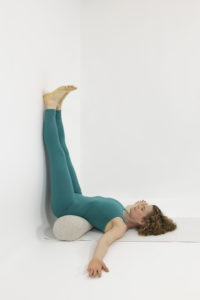
Supported Inverted Poses include any supported pose where your heart is higher your your head. There are both partial inversions (where your legs are below your heart) and full inversions (where your legs are higher than your heart). All are calming, but the full inversions will be more restful because you don’t have stand up to do them. See All About Supported Inversions for information about this group of poses.
Because these poses are a bit more active than restorative poses, they are good for resting if you’re feeling physically restless or anxious. They can also be helpful when your mind is racing even though you’re tired because it doesn’t take as much concentration to trigger the relaxation response because your physical position alone (heart higher than your head) causes your nervous system to switch to Rest and Digest. See Understanding the Relationship Between Baroreceptors and Relaxation for more information.
For resting, some people, like me, just practice a gentler supported inverted pose to rest in, such as Supported Bridge pose, Legs Up the Wall pose shown above, or Easy Inverted pose, shown here:
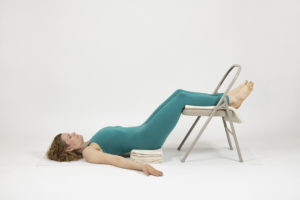
But if you’re feeling physically restless as well as tired, you can do a sequence that starts with the more active half inverted poses, such as Supported Standing Forward Bend and Supported Downward-Facing Dog pose, and gradually move into the gentle full inversions, as in these two sequences:
Featured Sequence: Relaxing and Resting with Supported Inversions
Featured Sequence: Easy Supported Inverted Poses
4. Resting and Energizing Yourself
If you’ve been sedentary all day, even though you know it would be good for you, both mentally and physically, to do some active poses, you may feel too lethargic from mental exhaustion to dive right into an active practice. In this case, you can do something a little unconventional: rest first and then gradually move into more active poses. This means starting your sequence with any resting pose you like, whether Savasana, a restorative pose, or a supported inverted pose. You stay in the resting pose as long as you like, and then you do a gentle but more active pose to ease into an active practice. Here is a good one:
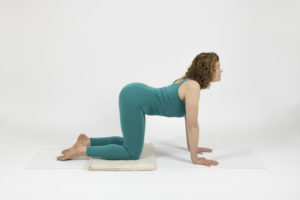
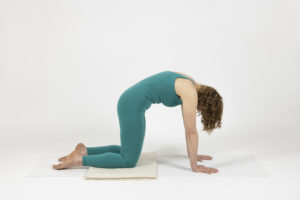
You can end your sequence with more resting as is typical in most sequences, or you can end standing up in Mountain pose so you feel more ready to take on whatever is next on your agenda.
See Resting and Energizing Yourself with Unconventional Sequencing for information about how to create these types of sequences and
See Feature Sequence: Energizing Yourself for an example of this type of sequence.
• Follow Yoga for Healthy Aging on Facebook and follow Nina on Instagram • Order Yoga for Times of Change here and purchase the companion videos here • Order Yoga for Healthy Aging: A Guide to Lifelong Well-Being here.


Leave A Comment